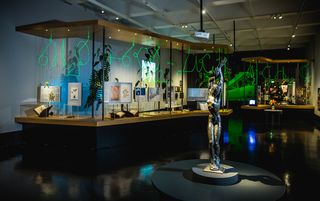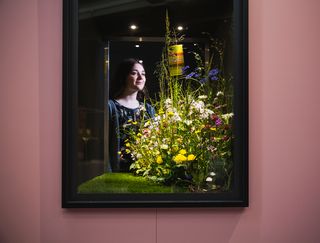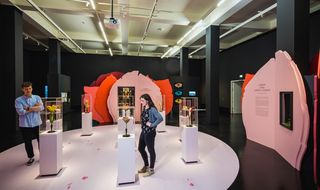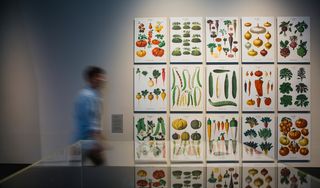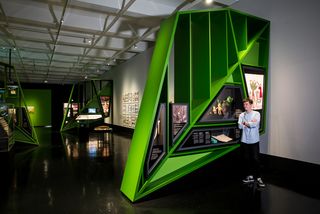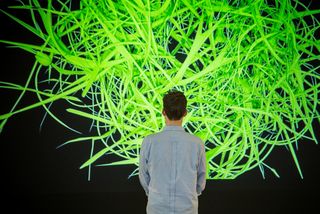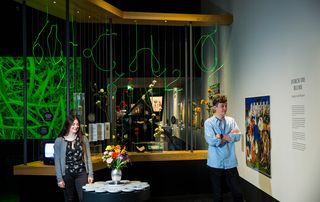Introduction
Ever thought of your cherry tree or the orchid on your window sill as a human being? It’s not as far-fetched as it sounds; after all, plants and people do share quite a lot in common. They grow and then die; they yearn for sunshine, and for water to quench their thirst. And according to the latest scientific findings, they are able to communicate with one another and may even have something resembling a memory, too. For the planet itself, there’s no question that plants are far more useful than we are as human beings. Plants produce the air that we ourselves and animals need to breathe; they create habitats and provide food. In other words, while plants can undeniably thrive splendidly without us, we are completely reliant on the vegetation that surrounds us.
At the People and Plants exhibition you’ll find out why the plant world is not only literally vital to our survival, but also delightful in its sheer diversity and beauty. The architecture for the exhibition has been designed to grow like a flower into the three rooms, with its roots, leaves and blossoms. Within this setting, an array of cultural-historical records and artworks, scientific specimens, photographs and video installations vividly demonstrate just how much curiosity and affection we as human beings have for our plant-based environment – but also how reckless and destructive we have been towards it. That’s the political aspect of the exhibition: Global challenges such as man-made climate change, the decline in biodiversity and the alarming world food situation compel us to think long and hard about a more deliberate and considerate approach to plants and nature as a whole.
On this museum-based foray across our green planet, visitors can expect lots of surprising, intriguing and entertaining things to see and do. And by the time they reach the end of the tour, there’s one popular misconception they will certainly have ditched: plants are anything but boring!
Artists
John Baldessari, Alberto Baraya, André Bayard, Karl Blossfeldt, Susanne Bürner, Samuel Butler, Karen Cantú, Martin Claßen, Roald Dahl, Arno Drescher, Mat Hennek, Alessandro Holler, Volker Kreidler, Jochen Lempert, Liisa Lounila, Richard Lowenberg, Marcus Maeder, Antje Majewski, Siobhán McDonald, Margaret Mee, Uriel Orlow, Elske Rosenfeld, Michael Sailstorfer, Klaus D. Schmitt, Renée Sintenis, Åsa Sonjasdotter, Stuart A. Staples, George Steinmetz, Alexandra R. Toland, Michael Wang, Andreas Weinand, Susanne M. Winterling
Exhibition sections
To the Roots
The first section features botanical drawings and artworks alongside the methods and instruments used to study the life of plants. For instance, how do you find out how plants grow, how they sense their environment and nourish themselves? The latest research seems to indicate that there is such a thing as plant-based intelligence and that plants like mimosa for example have what resembles a memory. So is humankind really the ‘culmination of all creation’?
Sowing and Reaping
The evolution of human beings as a species has been predicated on farming and the cultivation of plants. For thousands of years plants have given us energy and sustenance; they have been processed into remedies and provided the raw materials for paper, fabrics and building materials. Today, plants are used more intensively than ever before. When we chop down precious woodland areas and replace them with industrial monocultures, we threaten not just our biodiversity, but our global climate too. So how do we counter such trends both as a society and as individuals?
Living in the Planetary Garden
The fascinating diversity of wild and cultivated plants enhances our lives magnificently and beautifully. But what does a garden look like that provides a worthwhile living environment for people, plants and animals? Where might we leave weeds to grow rather than weeding them out? What plants - if left unchecked - are so dangerous that we cannot allow them to proliferate? Or is no plant pointless? A deeper understanding of our flora and vegetation might enable us to adopt a more sustainable approach to the world we want to live in.
Have a go!
Wenn Sie dieses Video abspielen, werden Informationen über Ihre Nutzung an den Betreiber des Videos (YouTube) übertragen und unter Umständen gespeichert.

The exhibition offers lots of opportunities for you to explore the plant kingdom, without gardening tools or field books, and broaden your knowledge of botany. Lend your ears to the trees or use nothing other than your body movements at a media installation to regulate the growth of the titan arum, the species of plant with the world’s largest inflorescence. Check out our picture puzzle to test just how familiar you are with the butterflies that flutter around your garden. And our wheel of fortune will tell you, through the language of flowers, whether, like a rose, you have a seductive effect on others or whether you’re as vain as a narcissus...
Photo Gallery
Funders

Translation by Stephen Grynwasser

